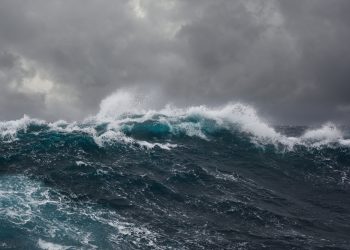U.S. and Alaska state officials have officially announced they will no longer seek an additional $92 million from Exxon Mobil Corp. to pay for environmental cleanup and restoration stemming from the massive Exxon Valdez oil spill nearly three decades ago.
The Department of Justice and the Alaska Department of Law announced that they are bringing to a close the federal and state judicial actions against ExxonMobil Corporation and its corporate predecessors regarding the 1989Exxon Valdez oil spill. The Prince William Sound, Alaska, harlequin ducks and sea otters thought in 2006 to have been impacted by lingering subsurface oil have recovered to pre-spill population levels. Scientists have concluded that exposure to the subsurface oil is no longer biologically significant to these species. Accordingly, the governments have decided to withdraw their 2006 request to Exxon to fund bio-restoration of subsurface lingering oil patches.
The March 1989 grounding of the tanker vessel Exxon Valdez on Bligh Reef in Prince William Sound spilled nearly 11 million gallons of North Slope crude oil that ultimately contaminated some 1,500 miles of Alaska’s coastline. It affected three national parks, four national wildlife refuges, a national forest, five state parks, four state critical habitat areas, a state game sanctuary and killed enormous numbers of birds, marine mammals and fish and disrupted the lives and livelihoods of Alaskans who rely on those resources.
“Our decision today highlights the trustees’ commitment to excellent science and the success of their restoration efforts since the spill,” said Assistant Attorney General John C. Cruden for the Justice Department’s Environment and Natural Resources Division. “The Reopener in our settlement with Exxon was unique and set a high bar for recovery of additional damages. Together with our partners in the Alaska Department of Law, we preserved a potential Reopener claim and investigated it to its logical end. Our action today allows us to celebrate all that has been accomplished in Prince William Sound since the spill.”
“Although we will not be pursuing Exxon for additional damages, our decision today does not close the book on lingering oil,” said Attorney General Craig Richards for Alaska. “We are fortunate to have alternatives for dealing with this issue that can be undertaken without the constraints of the Reopener language. We will be engaging Alaskans through the Trustee Council process to advise us on what steps they would like to see us take. ”
“I expect the Trustee Council will evaluate whether active restoration should be performed at any lingering oil sites using the same standards and process by which it considers other potential restoration projects,” said Trustee Council member and Senior Advisor Michael Johnson for Alaska Affairs to the Secretary of the Interior.
The Council has directed restoration efforts since the 1991 settlement and has established transparent procedures, with opportunities for public proposals and comment, for spending the restoration funds paid by Exxon.
NOAA scientists, who were instrumental in developing the information that led to the 2006 habitat restoration plan, will continue to monitor lingering oil sites and provide information to the Trustee Council for use in determining whether additional restoration measures will benefit the affected coastline.
“Naturally, the persistence of oil is of concern to us,” said Lois Schiffer of the NOAA General Counsel. “Although the lingering oil is largely in subsurface soil or rocks, it does have the potential, if disturbed, to expose intertidal resources to oil, and its presence can be disturbing to people who come across it. The real question is whether it is better to intervene or to leave it to break down over time.”
Source: US Department of Justice
In the onset, I was frank with you propecia before and after has changed my essence. It has become much more fun, and now I have to run. Just as it is incredible to sit.































































